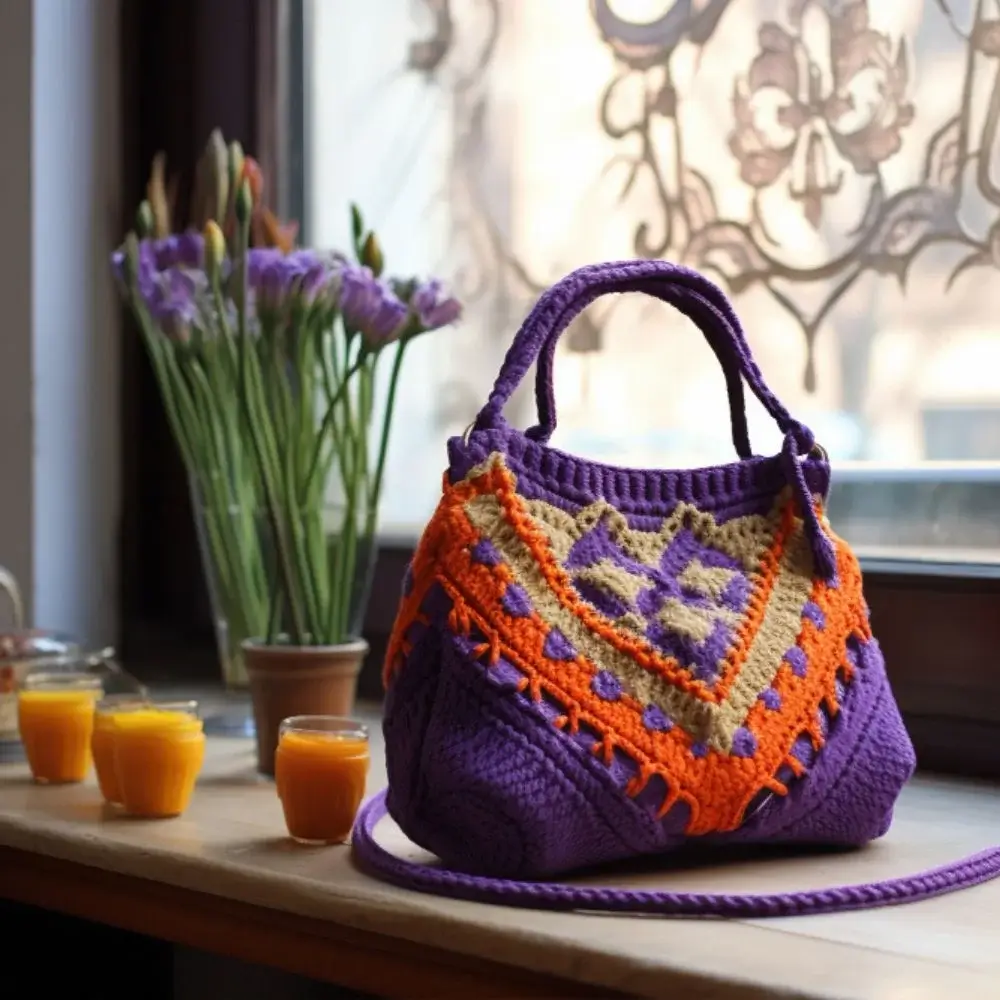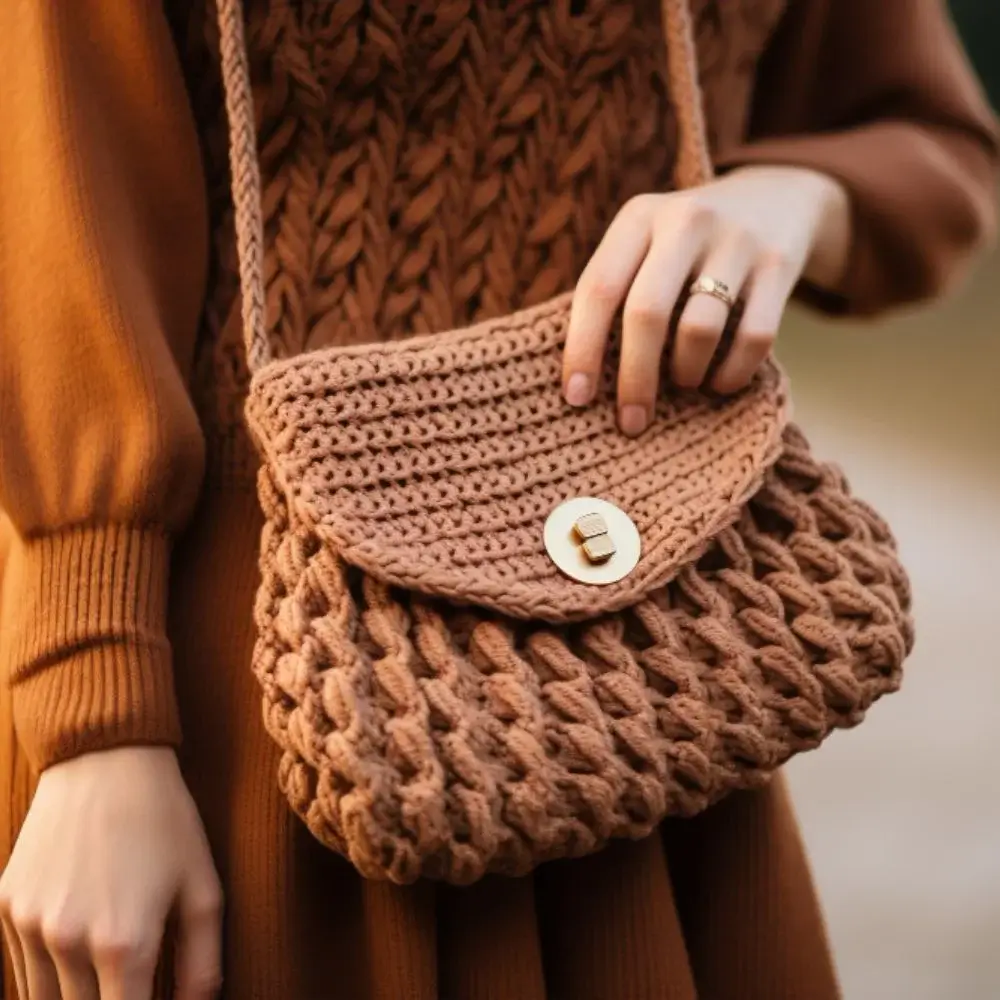Crochet bags are becoming increasingly popular, and rightfully so, as they are both stylish and versatile. However, a concern that often comes up is whether or not they can be washed. Maintaining the cleanliness of crochet bags is essential, mainly since they are often used to carry personal items. The short answer is that your crochet bag can be washed with proper care and precautions. Keep reading for a comprehensive guide on washing and caring for your crochet bag.
First and foremost, before washing your crochet bag, you should determine what type of fiber it is made from. This information can be found on the label or from the person who made it. The fiber type will determine the best way to wash it. Most crochet bags are made from cotton, which can be washed in the washing machine gently. However, other fibers, such as wool and silk, require special care and should be hand-washed. Always follow the care instructions to avoid damaging the material.
When washing a crochet bag in the washing machine, be sure to place it in a mesh laundry bag or pillowcase to avoid it getting tangled or damaged by the other clothes in the wash. Use a mild detergent and avoid fabric softeners, as they can cause the fibers to weaken and become worn out over time. Also, use cold water to prevent shrinkage and always opt for a gentle cycle. Once the cycle is complete, remove the bag from the mesh laundry bag or pillowcase and air dry it. Excessive heat can cause shrinkage or warping of the bag.
For delicate or handmade crochet bags, hand washing is the best option. Fill a basin with cold water and mild detergent, and gently swish the bag in the water. Avoid scrubbing or twisting the bag, as this can damage the fibers and cause the bag to lose shape. Rinse the bag in cold water until it runs clear, then gently lay it flat to dry. Avoid hanging the bag to dry, as the weight of the water can cause the bag to become misshapen.
Storing your crochet bag properly is also essential to keep it in good condition and prevent it from becoming dirty quickly. Keep your bag in a dust bag or pillowcase when not in use to prevent it from collecting dust and dirt. Avoid storing the bag in direct sunlight or areas with high humidity, as this can cause the fibers to become brittle or faded.
Finally, in the event of a stubborn stain, do not panic. Mix equal parts of baking soda and mild detergent and apply it directly to the stained area. Use a soft-bristled brush to scrub the area gently, then rinse it with cold water. Repeat the process until the stain is removed, and then wash the bag.
As long as proper care and precautions are taken, crocheted bags can be washed and maintained for a long time. Always check the fiber type and follow the care instructions when washing, avoid using high heat or fabric softeners, store the bag properly when not in use, and use the baking soda and detergent mixture for stubborn stains. With these tips, you can confidently use and maintain your crochet bag.
Crochet enthusiasts, we've gone above and beyond to bring you the ultimate collection of Crochet Bags that you can't wait to get your hands on. Our thorough, diligent research has led us to discover the most exquisite, stylish, and easy-to-use bags available online, and we are pleased to share them with you. Now is the time to throw out that tired old bag and replace it with a statement crochet bag! It is the perfect accessory for your next day out or vacation. Click on the link and embark on a journey to find your next favorite crochet bag!
What's the difference between single crochet and double crochet for bags?
Single and double crochet are fundamental stitches in crochet, each offering unique characteristics for bag-making. Single crochet creates a dense, tightly woven fabric, making it an ideal choice for bag bases that require stability and structure. In contrast, double crochet produces a more open and flexible texture, perfect for lightweight, lacy bag designs with an elegant drape. Your choice between these stitches should consider the desired bag style, functionality, and the aesthetic you wish to achieve. Experimenting with both opens opportunities to expand your crochet bag-making repertoire and create diverse textures within a single project.

What are some creative ways to add embellishments to crochet bags?
Elevating your crochet bags with embellishments allows for a world of creative expression. Incorporate decorative elements such as buttons, beads, tassels, or intricate embroidery to infuse your bags with personality and individuality. Surface crochet is a technique that can add raised, textured effects to your work, while appliqué enables you to attach playful motifs seamlessly. Crocheting directly onto the bag lets you integrate intricate designs organically. Embrace customization to ensure your crochet bags become visually captivating and each piece becomes a unique work of art.

What are the best practices for blocking a crochet bag?
Blocking is a crucial step in refining the shape and finish of your crochet bag. To start:
- Gently wet the bag using a spray bottle or soaking it, depending on the yarn used.
- Carefully shape it to the desired dimensions, ensuring corners and edges are smooth and symmetrical.
- Use rust-proof pins to secure it on a blocking board or foam mats, maintaining the shape until dry.

How do I create different textures and patterns in crochet bags?
Diversifying textures and patterns in crochet bags involves exploring various stitch combinations and techniques. Experiment with post stitches such as front and back post double crochet to add depth and relief to your bag's surface. Incorporating popcorn stitches or shell stitches can create eye-catching texture and visual interest. Adjusting your hook size and yarn weight is crucial in achieving different textures. Heavier and larger hooks yield a chunkier, more pronounced texture, while finer and smaller hooks produce intricate, delicate patterns. Combine these elements to craft bags with rich, varied textures that stand out.

How can I make a crochet bag more waterproof or durable?
Enhancing the durability and water resistance of your crochet bag involves several strategies. Lining your bag with fabric protects against wear and tear while helping prevent moisture from seeping in. Consider adding a silicone-based waterproofing spray on the bag's exterior. When selecting yarn, opt for natural fibers like cotton or synthetic materials like nylon. These materials inherently offer more resistance to moisture and wear, ensuring your crochet bag stands the review of time, even in challenging conditions.
Should I use a yarn bowl or bag to organize my yarn while crocheting?
Choosing between a yarn bowl and a yarn bag for organizing your yarn during crocheting depends on your preferences and workspace. Yarn bowls are elegant and keep your yarn clean and tangle-free. They often feature a curved cutout for easy yarn access, preventing it from rolling around. In contrast, yarn bags are portable and offer protection against dust, pets, and environmental factors. They come in various sizes and styles, making them versatile for on-the-go crafting or organizing multiple yarn skeins for larger projects.







